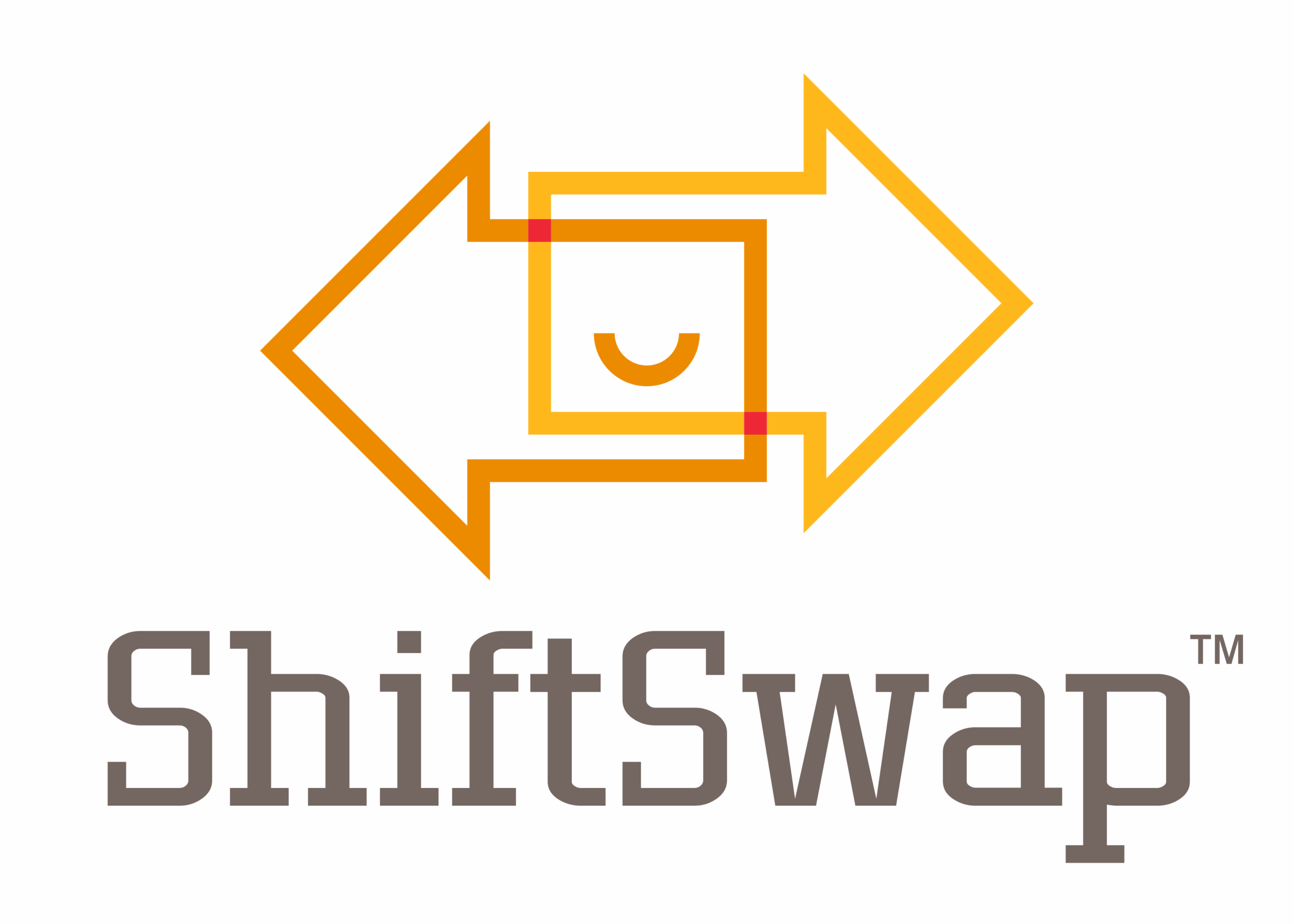Finding a Reliable Shift Management Software
Large enterprises face unique challenges in scheduling, coverage, and employee retention. That’s why shift management platforms have become indispensable tools. They optimize labor costs, support streamlined operations, and strengthen employee engagement by giving workers more autonomy over their schedules.
Among the many options available, ShiftSwap has emerged as a leader. Built specifically for shift-based industries, ShiftSwap focuses on what matters most: flexibility, cost optimization, and execution. Instead of being a generic add-on to an HR suite, ShiftSwap is a specialized workforce management software solution that simplifies shift management and improves productivity at any scale.
Large Enterprises Shift Management Platforms
For large enterprises, shift management platforms are a necessity for maintaining competitiveness.
- Optimize labor costs: Align staffing with operational demand to prevent overstaffing and avoid unnecessary expenses.
- Improve employee satisfaction: Flexible scheduling, real-time communication, and shift coverage increase workforce retention.
- Streamline administrative tasks: Automated shift management and instant updates minimize manual work and human error.
- Enable scalability: Handle complex scheduling needs across multiple departments or locations with ease.
When implemented well, these platforms can create stronger connections between leadership and employees.
- ShiftSwap – Flexibility, Fairness, and Instant Results
At the top of the list is ShiftSwap, a tool that assists operations leaders in executing their labor plans effectively. Many enterprises invest significant time in planning staffing levels but struggle with execution. ShiftSwap closes that gap with tools that balance workforce flexibility with business goals.
Key Benefits of ShiftSwap
- Employee-led shift management: Workers can claim open shifts, request voluntary time off (VTO), or grab shifts from coworkers, all while maintaining fairness and compliance.
- Instant communication: Real-time alerts and instant notifications reduce no-shows, improve response times, and keep everyone aligned about shift changes.
- Streamlined operations: Automates coverage changes, creates transparency with digital records, and eliminates favoritism in overtime and voluntary time off distribution.
- Fast go-live: Launch in as little as 48 hours with full onboarding and support, no software integrations required.
- Measurable ROI: Enterprises using ShiftSwap report reduced absenteeism, lower turnover, improved morale, and significant cost savings.
For large enterprises with complex needs, ShiftSwap acts as a workforce strategy that keeps employees engaged while ensuring business demands are met.
- Kronos Workforce Central
Kronos is widely recognized for its range of functionality. It integrates scheduling, timekeeping, and real-time analytics into one platform, helping managers make informed staffing decisions while maintaining compliance.
- Workforce.com
Workforce offers strong scalability, making it well-suited for large enterprises. With automated scheduling and time tracking, it supports streamlined operations while offering a user-friendly experience for both managers and employees.
- Shiftboard
Shiftboard stands out for its emphasis on shift exchange capabilities and workforce analytics. Its tools help reduce absenteeism, improve employee flexibility, and provide managers with data to forecast labor needs.
- Deputy
Deputy’s cloud-based platform supports multi-location operations with mobile scheduling. Its shift management tools and real-time alerts enhance workforce agility and employee empowerment.
- BambooHR
BambooHR integrates workforce scheduling with broader HR functions. Its multilingual support is a plus for enterprises with global teams, while its analytics support data-driven decision-making.
- Jibble
Jibble’s strength lies in its integrations with communication platforms like Slack and Microsoft Teams, making it easy for enterprises to blend scheduling with daily collaboration tools.
- Quinyx
Quinyx uses AI-driven scheduling to optimize staffing and reduce costs. Its customization options allow enterprises to adapt the software to different sites and operational needs.
- Snap Schedule
Snap Schedule leverages historical data for accurate forecasting. Its advanced tools allow enterprises to anticipate demand shifts and staff accordingly, reducing overtime costs.
- When I Work
When I Work is known for its employee-friendly mobile app and collaboration tools. It promotes engagement by giving employees control over schedule requests and swaps.
How Shift Management Platforms Drive Employee Engagement
Beyond cost savings, shift management platforms change the employee experience. For large enterprises, this is critical in today’s competitive labor market.
- Employee engagement and satisfaction: Flexible scheduling, mobile access, and easy shift grabs keep employees happier and more committed.
- Streamlined operations: Automation reduces administrative workload, while real-time data supports faster, smarter decisions.
- Reduced turnover and absenteeism: When employees feel supported with scheduling tools, they’re less likely to miss shifts or seek opportunities elsewhere.
- Better communication: Instant notifications ensure managers and employees always know where coverage stands.
Platforms like ShiftSwap go further by simplifying shift coverage, improving fairness, and helping enterprises avoid costly disruptions.
Choosing the Right Platform: Practical Tips for Operations Managers and HR
When selecting a workforce management software solution, large enterprises should consider:
- Scalability: Can it handle multi-location scheduling and complex workforce demands?
- Ease of use: Will employees adopt it quickly and use it daily?
- Integration: Does it work with payroll, HR, and communication systems?
- Support and training: Will your provider offer ongoing help to maximize ROI?
By prioritizing these factors, enterprises can ensure smoother implementation and stronger long-term results.
Shift Management for Enterprises
As enterprises continue to expand, the role of shift management platforms will only grow. With advancements in automation, analytics, and AI, these platforms will empower businesses to manage costs more effectively while keeping employees engaged and satisfied.
Among all available options, ShiftSwap offers the strongest balance of flexibility, transparency, and execution. By focusing exclusively on shift management and employee engagement, it delivers measurable improvements in morale, retention, and cost control, all while helping operations leaders achieve truly streamlined operations.
Enterprises that invest in ShiftSwap today are preparing not just for current challenges but for the workforce demands of tomorrow.

